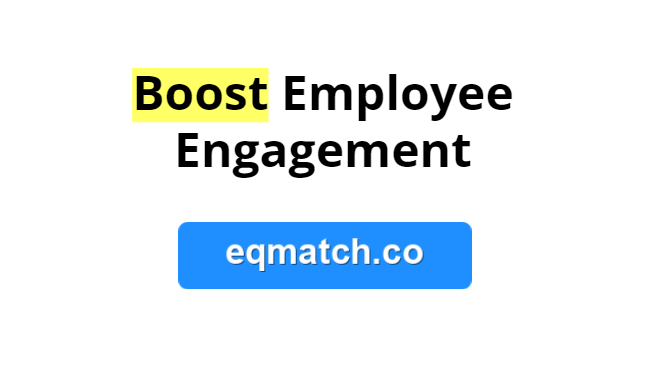Did you know that low employee engagement costs businesses close to USD 500 BILLION annually?
No wonder, businesses with a highly engaged workforce are 21% more profitable.
What are the best strategies for employee engagement?
In this post, we will talk about effective employee engagement strategies.
Let’s start with the basics.
Employee Engagement Definition
What is employee engagement?
It is a concept to help understand and describe the relationship between an employer and employees.
Employee engagement can be both qualitative and quantitative.
An employee demonstrating enthusiasm, and taking positive steps to head the organization in the right direction is said to be an engaged employee.
On the other hand, a disengaged employee lacks enthusiasm and does not enjoy their work.
An engaged employee is a company evangelist, whereas a disengaged employee is not.

Importance of Employee Engagement
Why should HR care about employee engagement?
While it is common sense that we should strive to make the workplace happier and employee-friendly, this is far from the truth in several organizations.
Employees make decisions, small and big when working in an organization.
When employees are engaged, they tend to make more rational and productive decisions.
This can help the business grow, and also reduce risk in difficult economic situations.
And, as you may already know, disengaged employees might not have the best interest of their organization at heart when making business-related decisions.
This can have both negative psychological and financial implications.
Hopefully, this gives you a better understanding of why employee engagement is important.
What drives Employee Engagement
Sadly, a large majority of organizations limit employee engagement initiatives to a quarterly or annual employee engagement survey.
An employee engagement survey is not enough to drive engagement in your workforce.
Employees are driven by purpose, development, leadership, communication, and professional growth.
People in an organization do not just need a fat paycheck, they want purpose and meaning.
They want recognition.
Employees want harmonious relationships with their managers.
Why current strategies aren’t working?
Perhaps the biggest cause of the failure of employee engagement strategies is that employee engagement is considered an “HR” domain.
In other words, it is only the responsibility of human resource professionals to work on strategies for employee engagement.
This cannot be farther from the truth.
Employee engagement should be an organization-wide initiative, led by the leaders.
If leaders do not own this initiative, others will not be able to understand and implement the same.
Some organizations also make engagement metrics complicated or use incorrect metrics to inflate scores.
Moreover, overuse of employee engagement surveys can be detrimental to improving engagement.

Effective strategies for employee engagement
Let’s talk about “practical” employee engagement strategies.
Attention
An effective way to boost engagement is to give individual attention to employees.
Leaders must be attentive to their employees.
Some people need more recognition than others.
Understanding the personality of your employees can be a great way to tailor the way you would mentor, coach, and lead them.
An emotional intelligence testing solution can be a great tool to help you assess the different areas of EQ.
The Right Fit
HR leaders should ensure that talent acquisition and retention strategies are aligned with the company’s objectives.
Make sure you have the right people in the right roles.
Again, assessing culture fit can save you much hassle.
Using a pre-employment personality assessment solution can help you in this context.
Training & Development
Leaders and HR professionals must ensure they are setting the team up for success.
Through the right training and development, leaders can help their employees improve their knowledge and skills.
Meaningful Work
Hiring the smartest and not having a clear career path for them is a recipe for disaster, aka, employee turnover.
Engaged employees are aligned with the business objectives, and they do meaningful work.
Do not rush hiring before having a clear career path for your employees.
Communication
Transparent, candid, and honest communication goes a long way in building trust.
This, in turn, leads to high employee engagement.
Leaders should make a conscious effort to have open communication with their employees.
When employees feel important, when they feel they have a “voice”, they find joy in working.
This can work wonders for the organization.
Employee engagement activities
Learning lunches, recognition programs, and team-building activities such as team building games can help boost employee engagement.
You can also leverage employee engagement apps to promote company culture and values.
Now that we have discussed some cool ideas for employee engagement, perhaps it is time we discuss the difference between employee engagement and employee experience.
Employee Engagement vs Employee Experience
Employee engagement is not the same as employee experience.
While engagement is an ongoing part of the employee experience, employee experience refers to the employee’s journey- from being hired to working in the organization.
Think of employee engagement as an important piece of the employee experience.
As per Gallup, employee engagement is the basic psychological need of an employee that must be met in order to perform their work well.
Wrapping Up
It takes a conscious effort to improve employee engagement.
When an organization genuinely cares and expresses appreciation for employees, engagement goes up.
Hopefully, these strategies for employee engagement will help you give a better perspective on how to improve employee engagement.



No responses yet